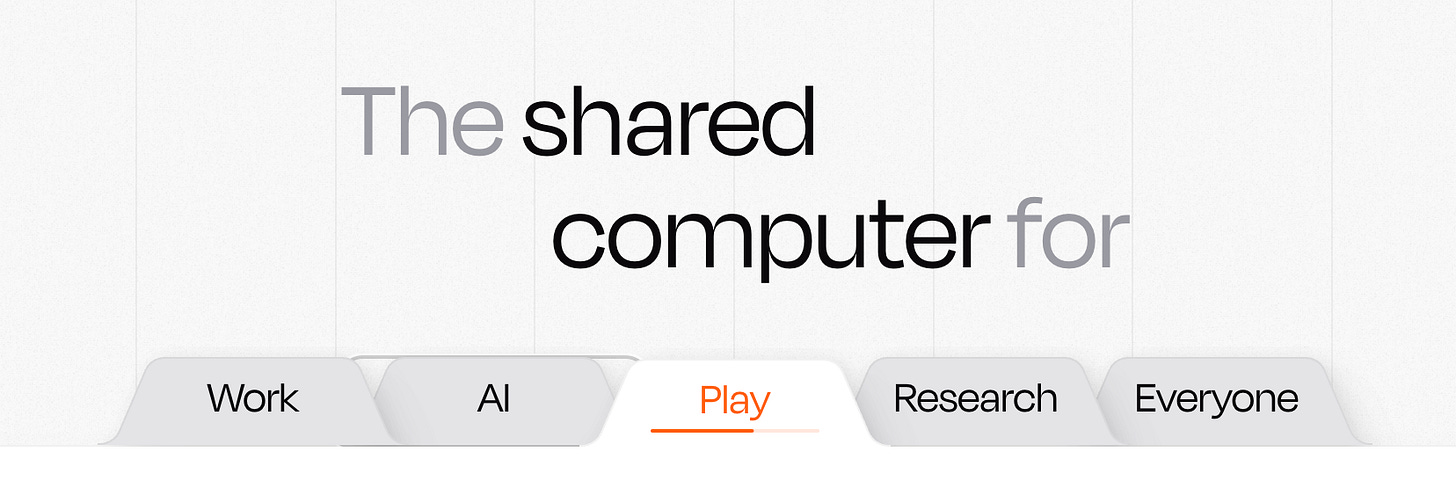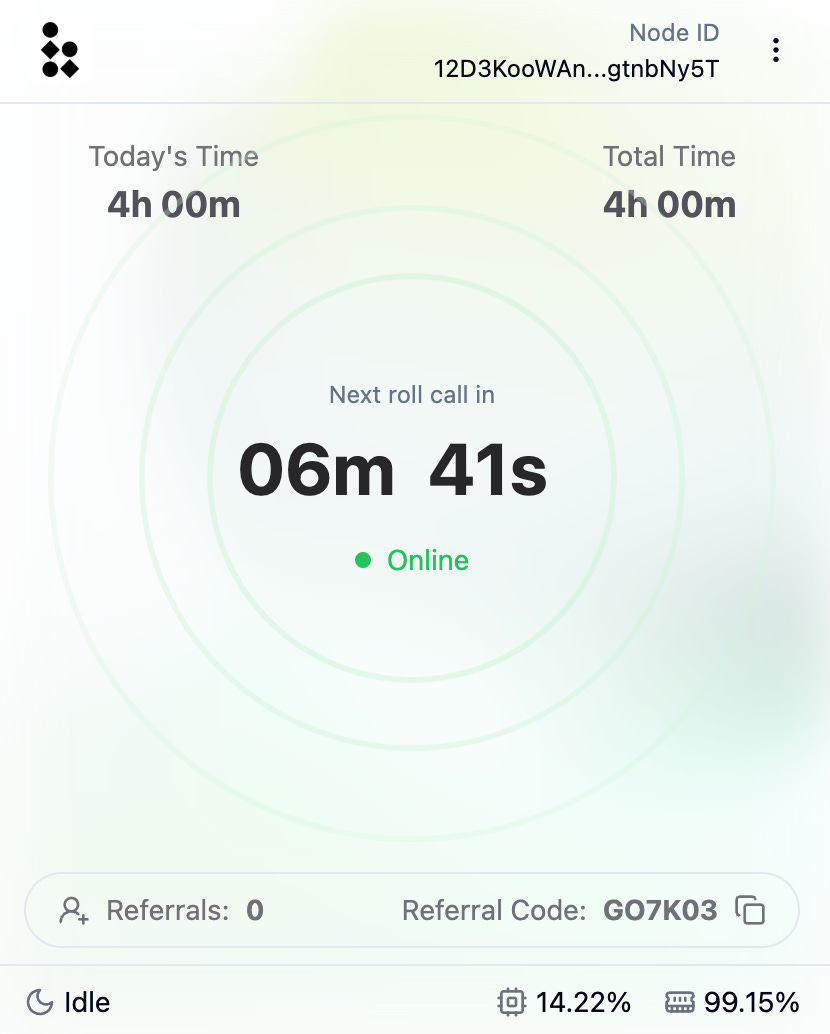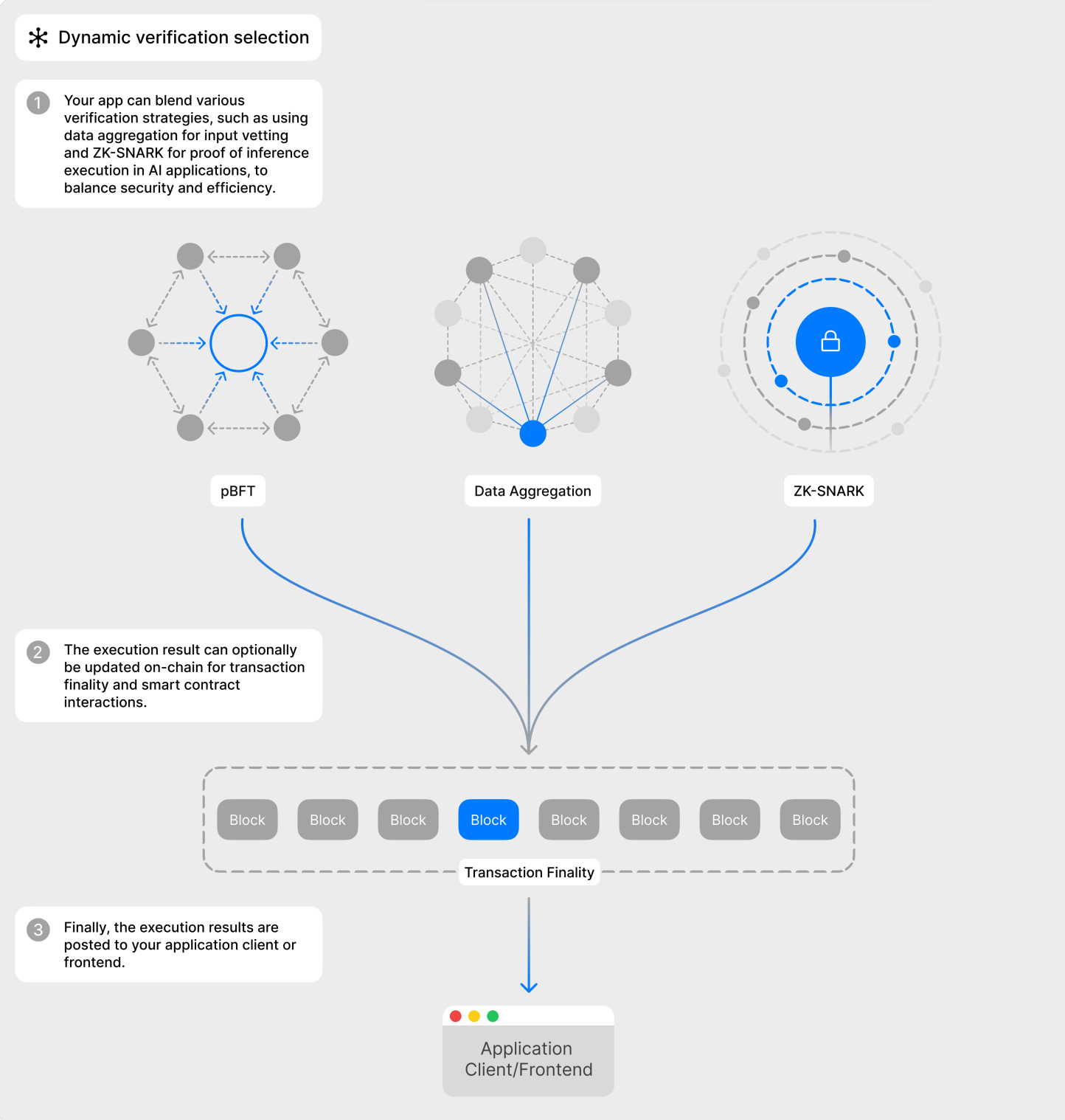Can Bless Decentralise the Cloud? 🪽
The project turning 5 million consumer devices into computing infrastructure
Computing power has never been cheaper to produce, yet never more expensive to access. Moore’s Law keeps delivering – your phone has more processing capability than NASA’s computers during the Apollo missions. But somehow, running a simple AI model costs hundreds of dollars a month, and scaling a startup means negotiating with the same three cloud providers that control the entire internet’s backend.
The math doesn’t add up. The resources exist, distributed across billions of devices. The demand is clear, with AI applications alone requiring exponential computational growth. Yet the market remains controlled by centralised gatekeepers extracting trillion-dollar rents.
Top cloud providers now dominate almost the entire infrastructure market: AWS (30%), Azure (23%), and Google Cloud (13%), giving three companies control of about two-thirds of global compute infrastructure. This concentration creates economic inefficiency, and structural fragility in the entire digital economy.
Bless is betting that this inefficiency can’t last.
What Bless Does
Bless Network is a decentralised physical infrastructure network (DePIN) that pools idle computing resources from consumer devices and makes them available for computational tasks.
The platform operates on a straightforward value exchange: developers and applications need computing resources, device owners have unused capacity, and Bless creates the infrastructure to match supply with demand.
What makes it distinct from previous attempts at distributed computing? accessibility. You don’t need specialised hardware, technical expertise, or complex setup procedures. Install a browser extension or desktop app, and your device starts contributing to the network. That’s it.
The network currently operates over 5 million testnet nodes across 210 countries, processing computational tasks ranging from AI inference to real-time data processing. According to their testnet metrics, the system maintains a 900ms average failover response time and has processed over 14,000 workloads during testing operations.
The Problem
The global cloud computing market is approaching $1 trillion annually, with profits flowing almost exclusively to a handful of tech giants. This centralisation creates three specific problems. Geographic bottlenecks mean when your application runs in a Virginia data centre but serves users in Singapore, latency becomes unavoidable. Real-time applications – AI assistants, autonomous systems, interactive gaming – suffer from this geographic concentration.
Cost inefficiency is built into the model. Traditional cloud providers must maintain massive infrastructure whether it’s being used or not. These fixed costs get passed to consumers through pricing that makes high-performance computing prohibitively expensive for smaller developers and organisations.
Then there’s the centralisation paradox. Decentralised applications (dApps) that champion censorship resistance and operational independence often run on AWS or Google Cloud. Analysis shows the majority of blockchain validators rely on centralised cloud infrastructure, undermining the philosophical foundations of decentralisation itself.
Bless claims to address these issues through distributed edge computing that operates up to 90% cheaper than traditional cloud services while placing computational resources closer to end users.
How Bless Network Works
Install: Download the browser extension (Chrome, Edge) or desktop app for your operating system
Configure: Set how much of your device’s resources you want to contribute – CPU, GPU, memory
Run: Let it operate in the background while you work, browse, or game
Earn: Receive TIME tokens based on your computational contributions
Redeem: Convert TIME to BLESS tokens during periodic “Chapters” (every few months)
That’s the user experience. No technical expertise required, no specialised hardware needed, no complex setup procedures. Behind this simplicity sits sophisticated technical architecture.
The technical architecture involves four core technologies working together.
1. Dynamic Resource Matching
When a computational task enters the network, the system matches it to the right device. It’s like a matchmaking algorithm that considers what your device is good at – processing power, location, internet speed, and past performance.
A heavy AI task that needs graphics processing? It goes to someone’s gaming PC. A simple calculation? Any regular laptop can handle it. Need low latency? The system finds a device close to the user. The matching algorithm explores different options first, then narrows down to the best fit.
2. WebAssembly Secure Runtime
The biggest question: how do you run code on someone’s device without compromising their personal data?
Bless uses WebAssembly sandboxing – think of it as a locked box inside your computer. Tasks run inside this box with zero access to your files, browser history, or anything else on your device. You don’t even know what task you’re processing, and the task can’t see anything about you.
On top of that, zero-knowledge proofs verify that work was done correctly without revealing the actual data. It’s cryptographic proof of honest work.
3. Randomised Task Distribution
To stop bad actors from gaming the system, task assignments are randomised. Even if someone controls multiple devices, they can’t predict which tasks they’ll receive or coordinate attacks. The randomisation looks chaotic from the outside but maintains efficiency on the inside.
4. Adaptive Verification
Not all tasks need the same security checks. A simple math problem just needs a few devices to compare answers. A complex computation might need cryptographic verification. Bless adapts the verification method to match what the task actually requires, avoiding unnecessary overhead while maintaining security.
The Economic Model: TIME and BLESS Tokens
Bless operates a dual-token system designed to balance immediate participation incentives with long-term network value:
TIME tokens function as immediate rewards for node operators. Users earn TIME proportional to their computational contributions, similar to a loyalty program. Every few months (called “Chapters”), participants can redeem TIME for BLESS tokens. Unredeemed TIME gets burned, creating deflationary pressure.
BLESS tokens serve as the governance and value-capture mechanism. With a fixed total supply of 10 billion tokens, BLESS is used for network governance, staking, and paying for computational services. The economic model directs 90% of application revenue to token buyback and burn, creating sustainable deflationary mechanics.
The token distribution allocates 45% to community rewards, with the remainder split between investors (17.5%), team (15%), advisors (3%), and ecosystem development.
Competitor Comparison: Where Bless Fits In
Akash Network: Professional Infrastructure
Akash requires dedicated hardware and technical setup. Bless needs a browser extension. Akash targets professional hosting providers with server infrastructure. Bless uses consumer devices – laptops, gaming PCs, phones.
Akash operates a single-token (AKT) model for a general cloud computing marketplace with a market cap of $187 million. Bless uses dual tokens (TIME for rewards, BLESS for governance) focused on edge computing. Market cap: $110-150 million, down to ~87 million with 5+ million testnet nodes across 210 countries.
The fundamental difference: Akash decentralises where cloud infrastructure runs. Bless decentralises who can provide it.
Render Network: Specialised GPU Rendering
Render focuses exclusively on GPU rendering for 3D content, visual effects, and AI image generation. It requires professional-grade GPUs running OctaneRender, Redshift, or Blender Cycles. This is a niche targeting creative studios and professionals who’ve already invested in rendering hardware.
Bless accepts any consumer-grade hardware and targets broad edge computing applications – AI inference, real-time processing, distributed applications, gaming infrastructure. Render goes deep in one vertical. Bless goes wide across multiple use cases.
Both claim ~90% cost savings, but they’re solving different problems. Render competes with render farms. Bless competes with AWS.
The Key Distinction
Akash decentralises cloud infrastructure distribution. Render decentralises GPU rendering capacity. Bless democratises infrastructure participation itself, turning ordinary devices into productive compute nodes.
Conclusion
Bless Network represents a practical approach to decentralised computing that prioritises accessibility over ideological purity. By removing technical barriers and focusing on idle consumer device capacity, they’ve created a participation model that could actually scale.
The combination of WebAssembly security, intelligent resource matching, and geographic distribution addresses real limitations in centralised cloud infrastructure. For applications requiring edge computing, low latency, or cost efficiency, the value proposition is compelling.
Whether Bless successfully challenges the cloud computing monopoly remains to be seen. But the foundation is solid, the early metrics are promising, and the approach is pragmatic enough to have a shot at mainstream adoption.
For Token Dispatch readers interested in DePIN infrastructure plays, Bless merits attention – not as a speculative moonshot, but as a project attempting to solve actual problems with thoughtful technical architecture.
Also just remember that in crypto, execution matters more than whitepapers. The testnet showed what’s possible. The mainnet will show what’s sustainable.
That’s it about Bless. See you next week with another cool product.
Thejaswini
Token Dispatch is a daily crypto newsletter handpicked and crafted with love by human bots. If you want to reach out to 200,000+ subscriber community of the Token Dispatch, you can explore the partnership opportunities with us 🙌
📩 Fill out this form to submit your details and book a meeting with us directly.
Disclaimer: This newsletter contains analysis and opinions of the author. Content is for informational purposes only, not financial advice. Trading crypto involves substantial risk - your capital is at risk. Do your own research.







